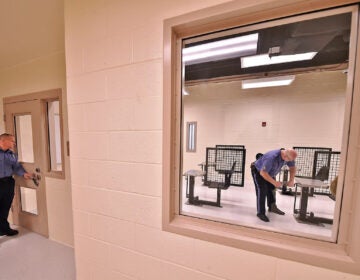Lincoln University, Delaware State buck trend to grow
Listen-
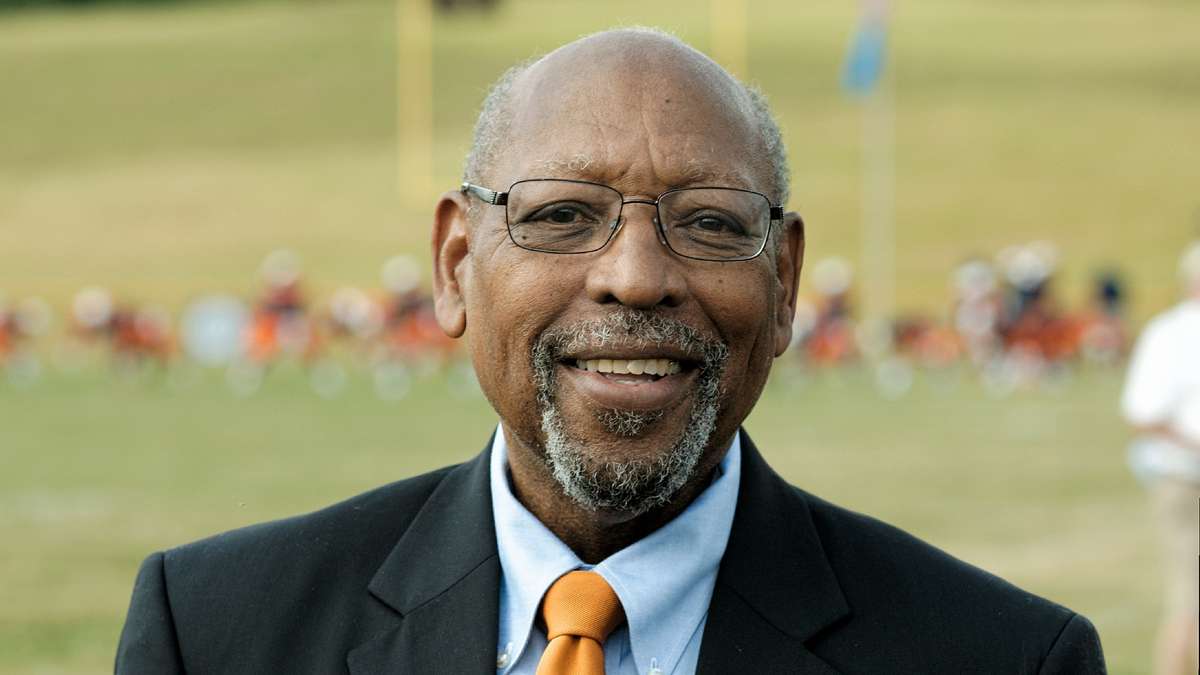
Lincoln University President Richard Green attends the Lincoln-Cheyney football game. He says his school's support services are the reason students stick around and succeed. (Bastiaan Slabbers/for NewsWorks)
-
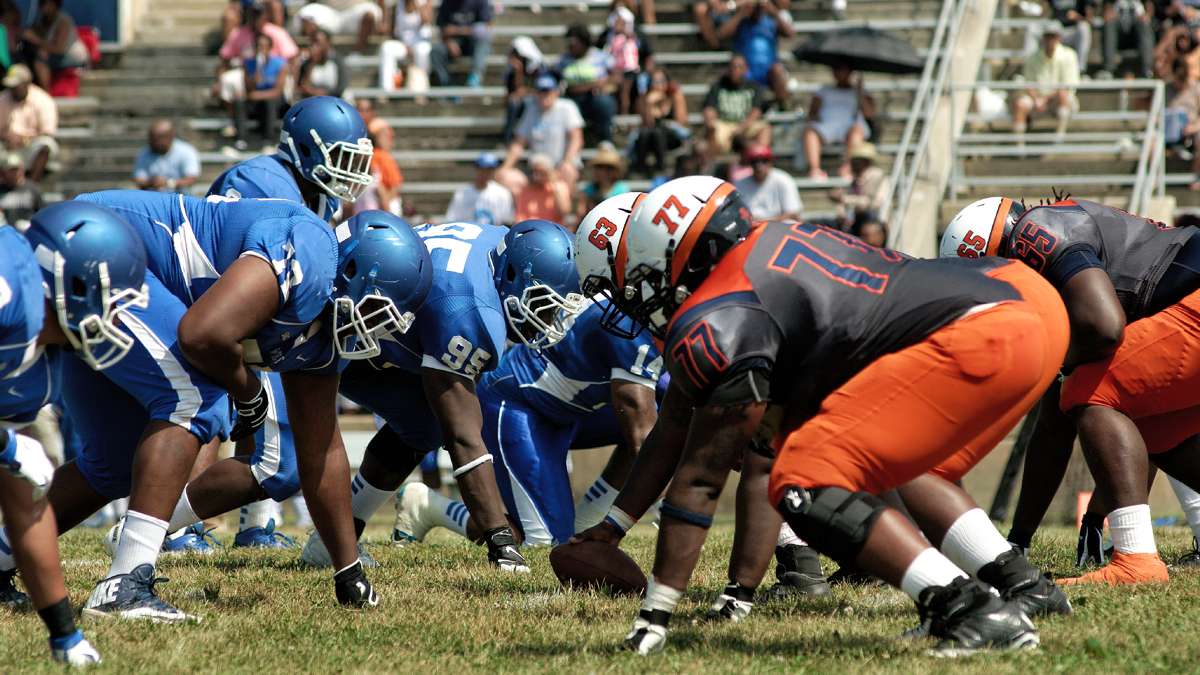
At O'Shields-Stevenson Stadium, Cheyney University Wolves (in blue) and Lincoln University Lions face off during the 'Battle of the Firsts.' Cheyney is the country's oldest institution of higher learning for black students, while Lincoln was the first one to grant degrees. (Bastiaan Slabbers/for NewsWorks)
-
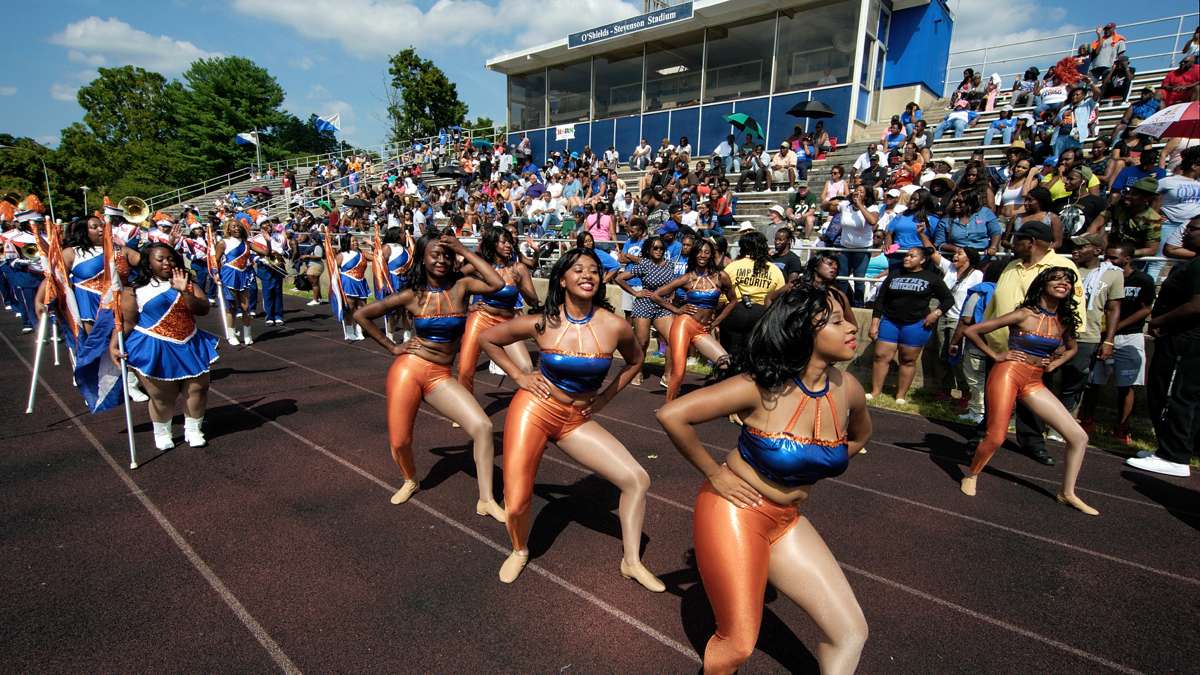
Lincoln University cheerleaders perform in front of the Cheyney stands. Enrollment at Lincoln is up, while Cheyney numbers are falling, but both schools suffer from funding shortages. (Bastiaan Slabbers/for NewsWorks)
-
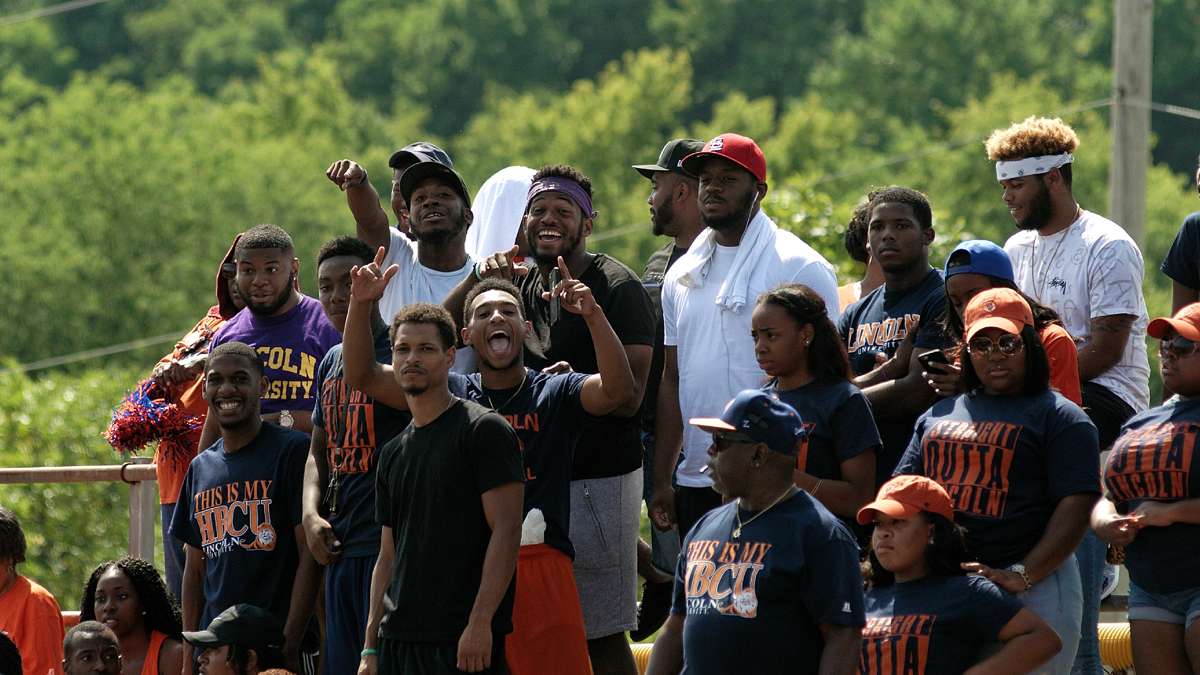
Lincon students cheer for the Lions during the 'Battle of the Firsts' at Cheyney University. (Bastiaan Slabbers/for NewsWorks)
-
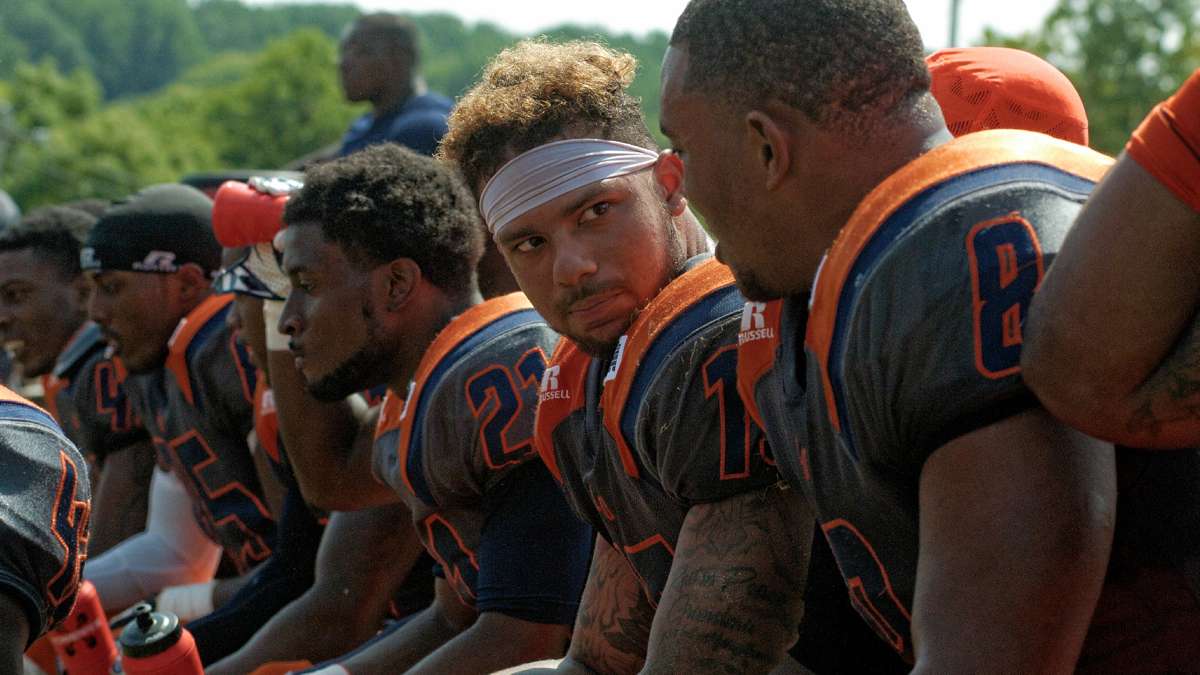
Lincoln footbal players confer on the bench during the contest against Cheyney. (Bastiaan Slabbers/for NewsWorks)
-
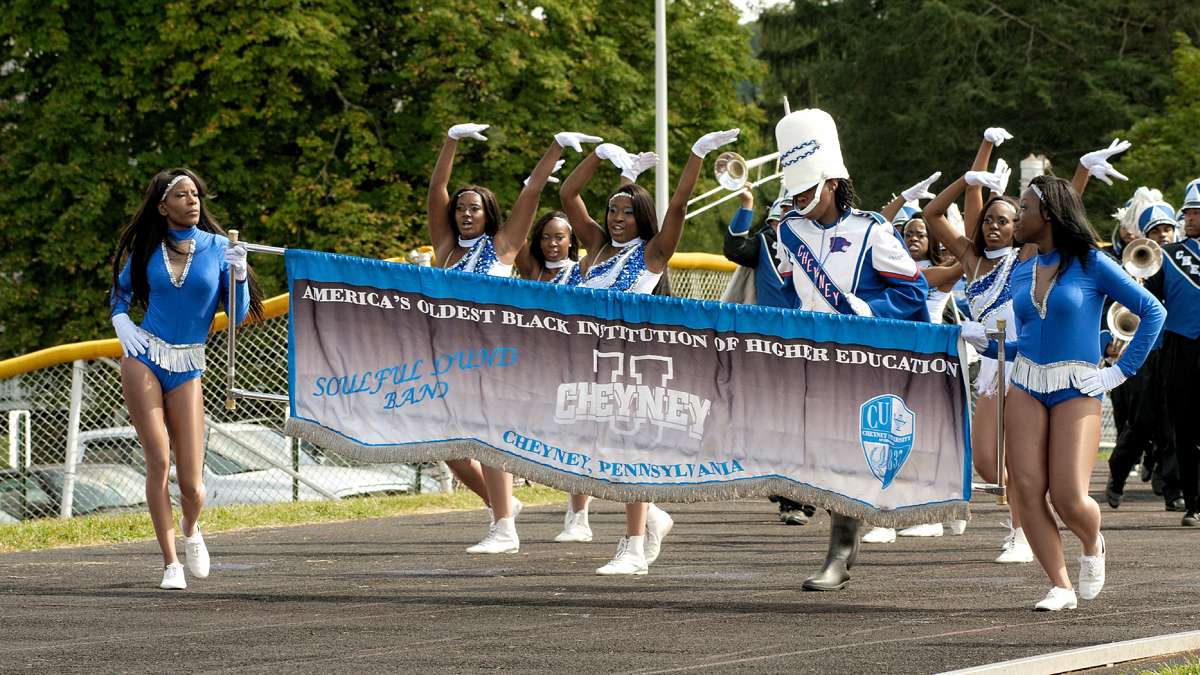
The Cheyney University cheer squad and marching band perform during half time in the football match against Lincoln University. (Bastiaan Slabbers/for NewsWorks)
-
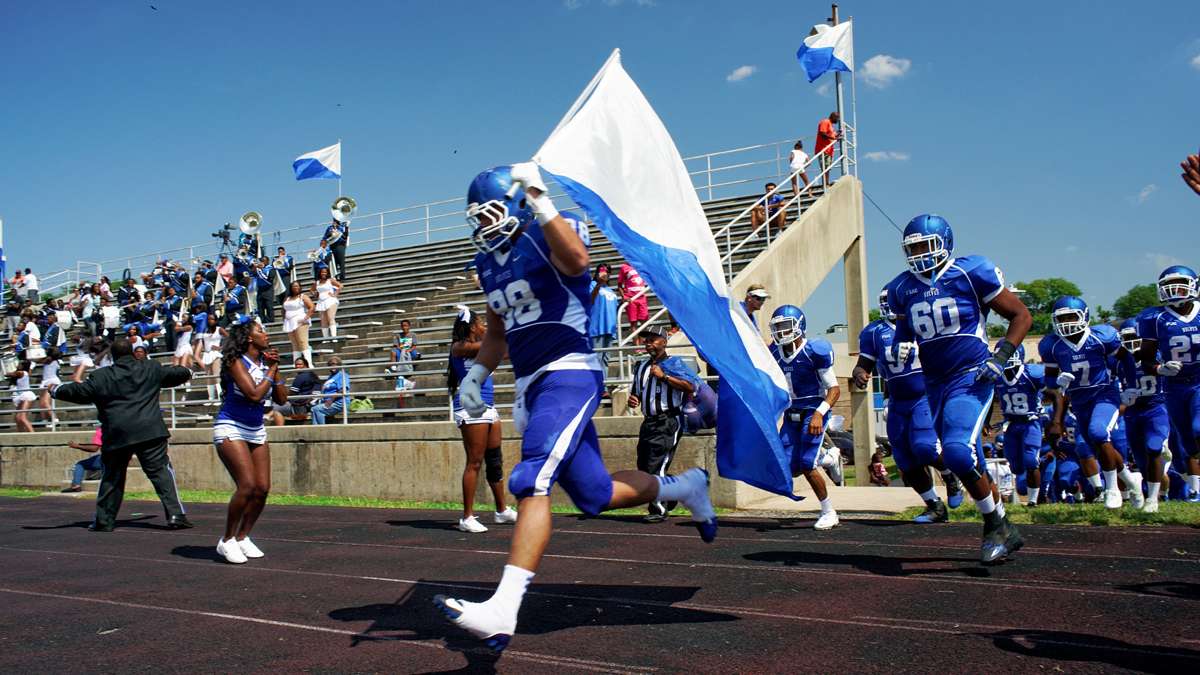
Senior Christian Sanchez caries the flag as the Cheyney University Wolves enter O'Shields-Stevenson Stadium for the 'Battle of the Firsts' against Lincoln University Lions. Cheyney is the country's oldest institution of higher learning for black students, while Lincoln was the first one to grant degrees. (Bastiaan Slabbers/for NewsWorks)
-
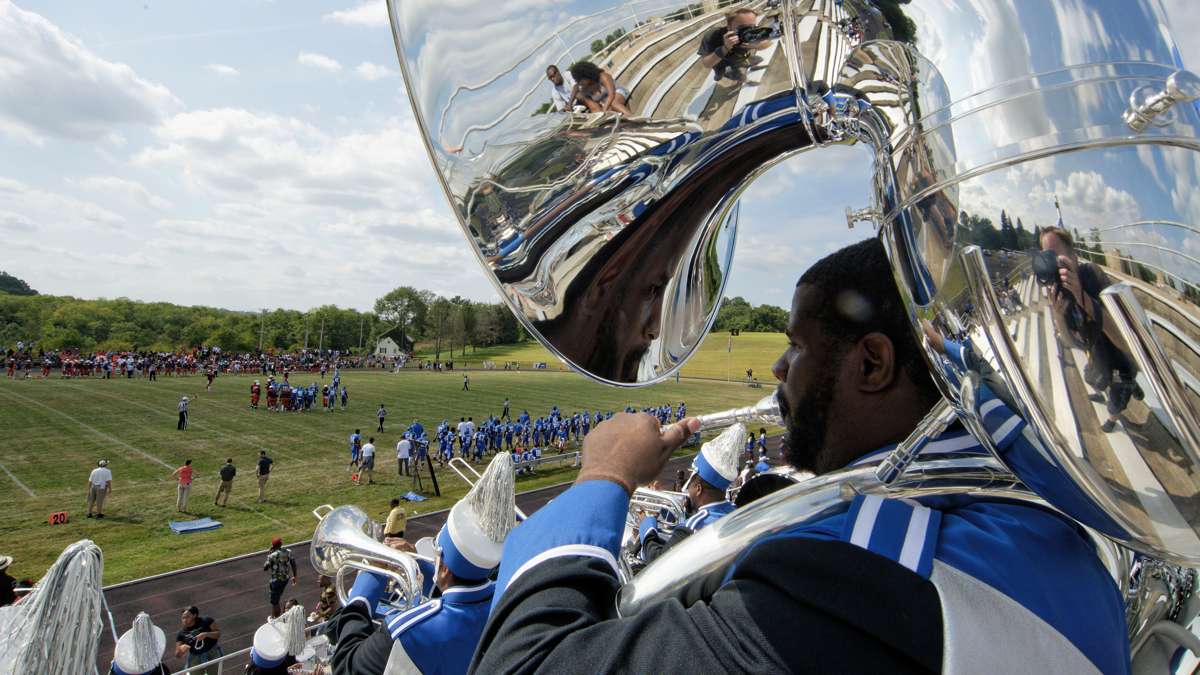
Members of the Cheyney marching band play in the stands. Historically black colleges like Cheyney enroll 8 percent of African-American college students, but their graduates make up 21 percent of African-Americans getting diplomas. (Bastiaan Slabbers/for NewsWorks)
-
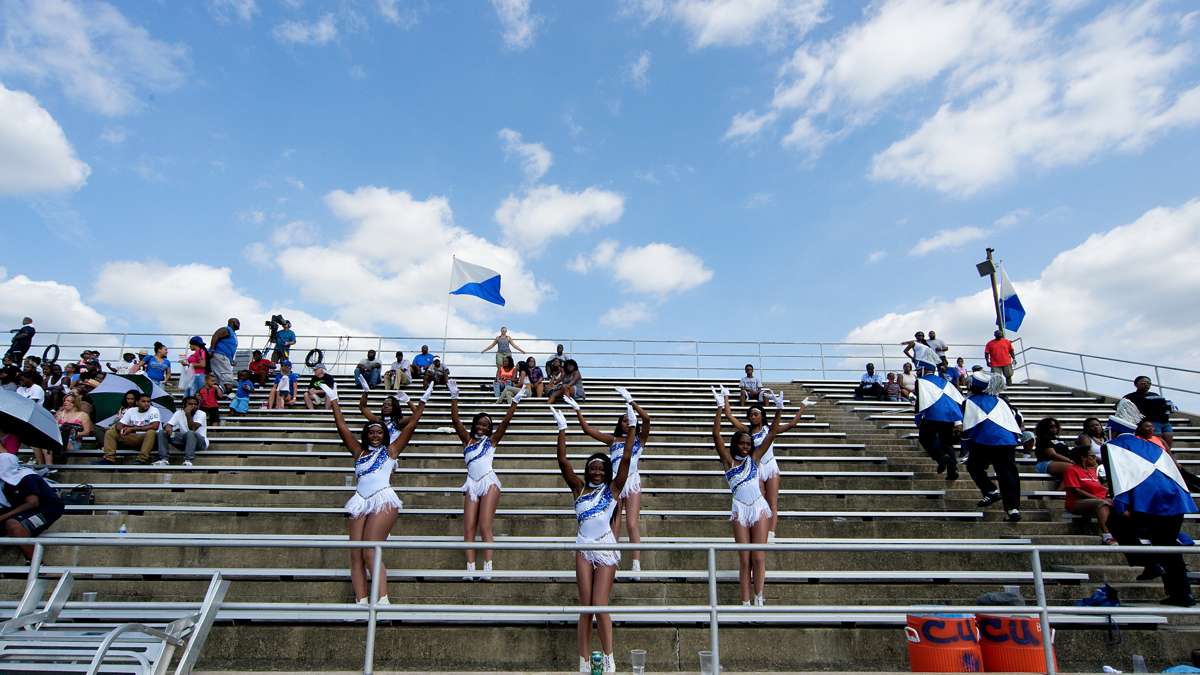
Cheyney cheerleaders chant for the Wolves during a football game in September. The historically black school has half the enrollment it did five years ago. (Bastiaan Slabbers/for NewsWorks)
-
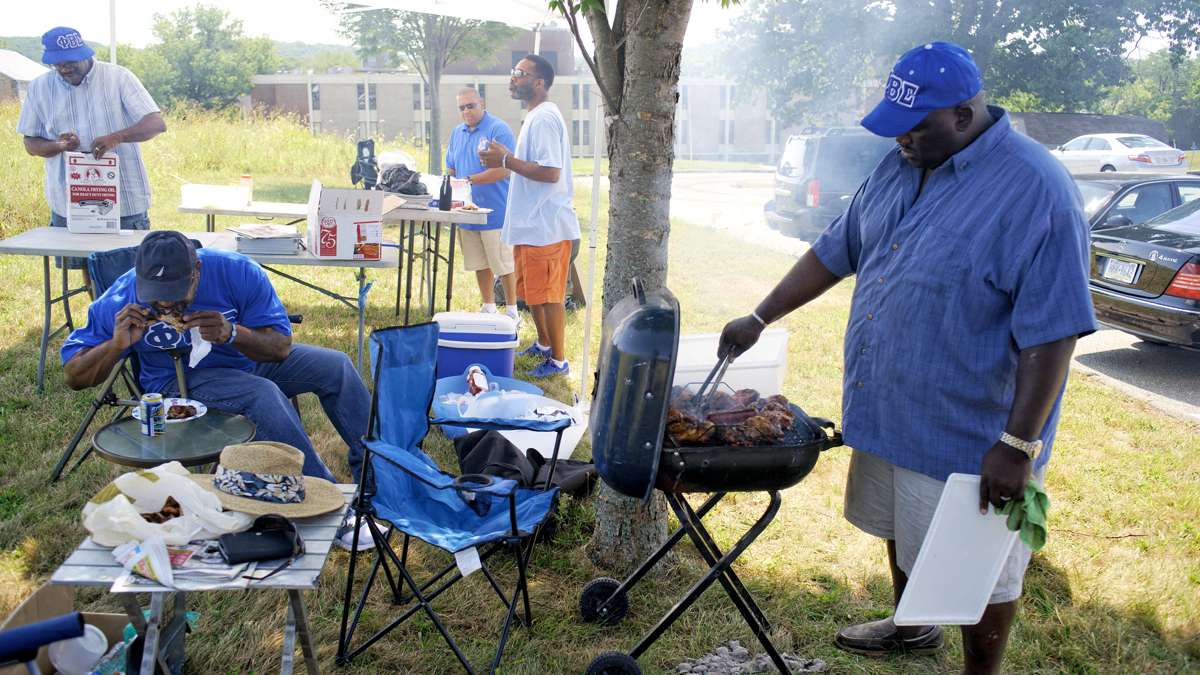
Cheney University alumni take part in a tailgating party ahead of the 'Battle of the Firsts' football game between the Cheyney Wolves and Lincoln University Lions, in September at the Cheyney campus. (Bastiaan Slabbers/for NewsWorks)
Since the Great Recession ended, college enrollments have been growing overall, but steadily declining at historically black colleges and universities, known as HBCUs.
Two local HBCUs, Lincoln University and Delaware State University are bucking that trend.
Jamar Earnest wanted to attend an HBCU, but there are no historically black colleges on the West Coast. The California senior chose Lincoln in Chester County.
Out-of-state students like Earnest are one reason Lincoln’s numbers are growing. They now outnumber those from Pennsylvania.
“Lincoln just felt more at home for me, like how they interacted with me, how they were ready for me to come here,” the 21-year-old said. “They was worried about me as an individual rather than just me as a student. It was more of an embrace that I felt by Lincoln.”
For the first time in four years, Lincoln is growing enrollment. It went up by 20 percent for first-year students and four percent overall this year.
That can be challenging. Earnest says there are 100 students in his mass communication program and only four professors.
With flat funding from the state and the current budget impasse in Harrisburg, the university has not filled many vacancies.
“I wish I had certain other classes in my major, but I have to be more understanding because we don’t have the funds to hire all the professors that we need,” Earnest said. “It puts a strain on all the students. So it’s just like, how are you supposed to even take certain classes within a semester?”
Lincoln’s interim president Richard Green says the university’s recruitment strategies include international students, who have grown to three percent of the student body.
“We have a historical legacy for serving students from other continents, especially from Africa,” he said. “We have made a special effort to increase our program engagement in other countries.”
International students have been part of Lincoln since the early days, and notable alumni include several African leaders.
Olutoyin Olowookere is from Nigeria, but came to the U.S. when she was seven years old. The junior from San Antonio chose Lincoln because she was awarded a scholarship, but also for the university’s heritage.
“We realized the first president of Nigeria went to Lincoln, and so automatically my father just felt like it was home,” the 20-year-old said. “As soon as I stepped in, it felt like family…And I knew my parents were going to be far away, and I wasn’t afraid to be far away from my parents because I felt safe here.”
The business management major didn’t expect the experience to push her to do more than just study.
“When I came here, I was concerned about right now and wasn’t really concerned about the future,” Olowookere said. “I thought it was going to be like, ‘We’re all African-American. Let’s just be here and party together.’ But it was like, ‘You are African-American. What are you going to do for your community? What are you going to do for your family? How are you going advance yourself?’ And that was really eye-opening.”
Besides international students, Green says Lincoln is focused on recruiting two of the fast-growing populations: Latinos and adult learners, as well as partnering with community college systems across the country.
‘Focus on students’
Last fall, the football season kicked off with the “Battle of the Firsts” between Cheyney University and Lincoln. The annual rivalry is between Pennsylvania’s two HBCUs who both claim to be the first historically black college in the nation.
Cheyney is the country’s oldest institution of higher learning for black students, while Lincoln was the first one to grant degrees.
Cheryl Jones-Miller sits in the stands, watching her son Deion Miller, a freshman, play for Lincoln.
She says Deion has always been a good student, and she hopes he’ll take advantage of his professors and available resources to keep up his grades.
“They assured us that there was ample tutoring,” she said. “They really focus on the students and trying to help them to be able to graduate because it’s really important to them.
Lincoln, the alma mater of Thurgood Marshall and Langston Hughes, has a graduation rate of 42 percent, on par with the national average of 43 percent.
Green, Lincoln’s president, says their support services are why students stick around and succeed.
“We do have services for students that help them through the first year,” he said. “But it’s the attention students get from faculty and others that leads to our maintaining and retaining students here.”
Lincoln’s retention rate is 72 percent, above the national average of 67 percent.
Diversifying campus
Enrollment is ballooning at Delaware State University, an HBCU in Dover.
President Harry Williams says the university’s been strategic in recruiting. A main focus is building partnerships with universities abroad, particularly in China. The university’s created programs where students earn a degree from Delaware State without traveling here.
“We currently have about 500 Chinese students who are enrolled in Delaware State degree programs in China,” he said. “So that’s a revenue stream for us and we’re seeing a net return on that.”
The number of international students studying in the U.S. has increased by 40 percent in the past decade and is only expected to grow, as well as, deeper international engagement by universities, according to a recent study.
Since Williams took the helm six years ago, the university’s had five years of record enrollment. It’s current 4,600 students is an all-time high.
“We have more applications than we’ve ever had at one time,” he said. “This past year, we had close to 7,000 applications for 900 seats, so that gives us some flexibility in terms of selecting our students.”
He says a new state scholarship program for Delaware residents was the game changer that boosted in-state applications and cemented the university’s in-state stability.
The university is recruiting Latinos, adult learners and veterans.
Part of the reason for Delaware State’s growing enrollment is its shifting student demographics. Black students now make up 63 percent of the student body compared to 74 percent in 2008. International and Latino students have both grown.
Delaware State is keeping its students. The university’s retention rate is 72 percent, which is above the national average. Williams says that’s because they’re helping students with the main reason they drop out — money.
“We created what we call retention scholarships,” Williams said. “We identified those students who had high GPAs and challenges with finances and supported them.”
They’ve raised nearly $20 million to support scholarships, including retention scholarships.
Delaware State, as a land-grant institution, has a strong focus on STEM programs, which include partnerships with NASA and a new optical science center. Its aviation program has a 100 percent job placement rate.
“When you represent quality, people will associate themselves with quality and excellence. And that’s what our HBCUs have demonstrated for many, many years,” Williams said. “When people come here, and they see that…they get excited and they want to be part of that and that’s the reason why we’ve been experiencing the growth we’ve seen in the last few years.”
HBCU experts say black colleges need to be open to diversifying their campuses and develop program niches as keys to sustainability.
HBCU presidents say enrolling students who are not African-Americans is nothing new. They says they can grow more diverse without changing their mission or what draws students to campus.
WHYY is your source for fact-based, in-depth journalism and information. As a nonprofit organization, we rely on financial support from readers like you. Please give today.



